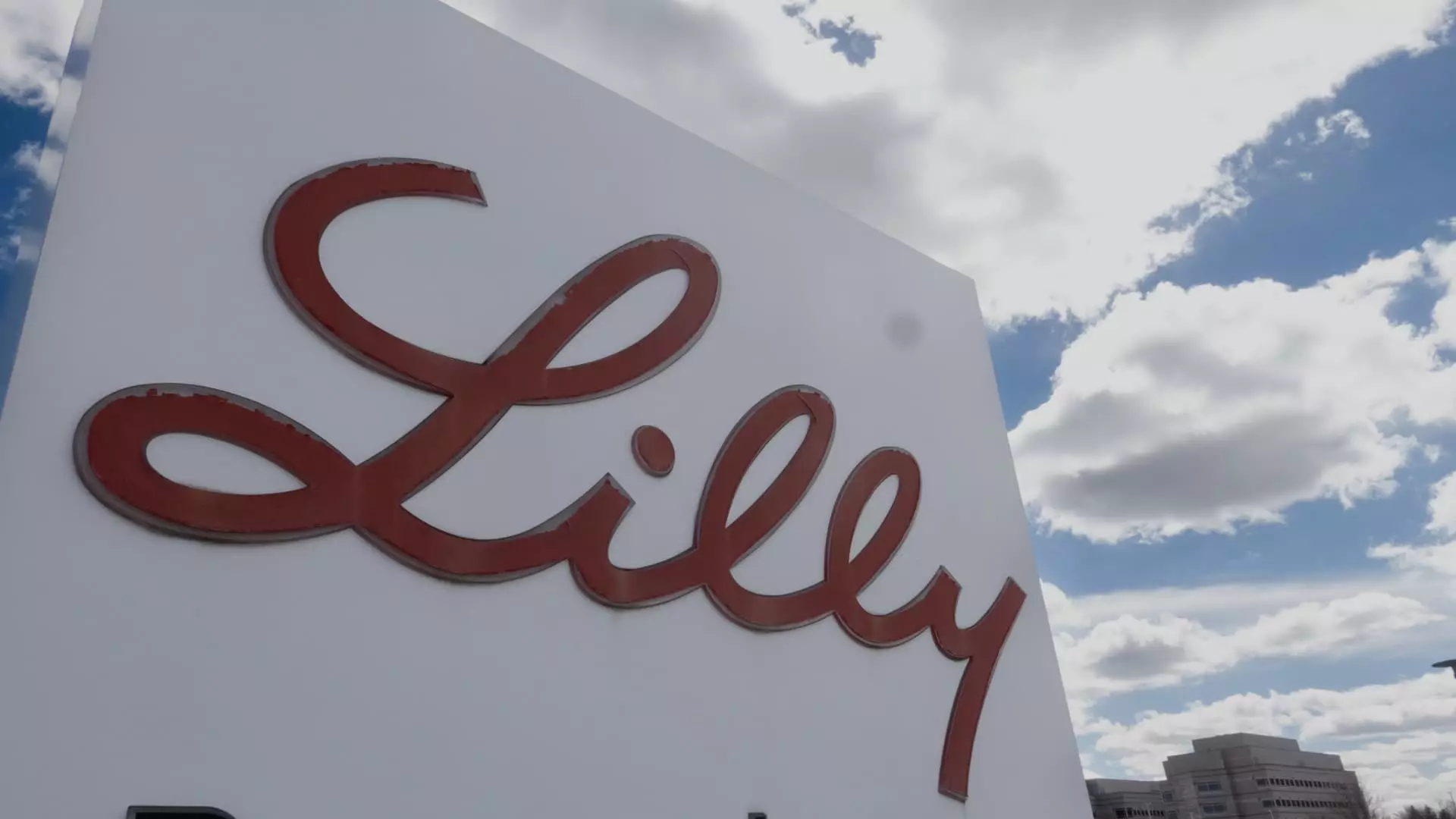The pharmaceutical giant Eli Lilly is poised to make a significant impact on the industry with its latest undertaking: a $4.5 billion investment to establish the Lilly Medicine Foundry. This cutting-edge facility aims to streamline and enhance the manufacturing processes of its medicinal products, ensuring that the company maintains its competitive edge in a booming market. As healthcare demands evolve and competition increases, Lilly’s strategic focus on manufacturing efficiency is not merely an operational upgrade; it’s a calculated response to both current and future needs in drug development.
Located in Indiana, the Lilly Medicine Foundry is set to revolutionize how pharmaceuticals are produced by integrating research and manufacturing stages in one facility. Traditionally, these processes have been segmented, resulting in delays and inefficiencies. David Ricks, the CEO of Eli Lilly, emphasizes the significance of this approach, stating that the goal is to transition molecules from laboratory settings directly to pharmacy-scale production. This innovation not only promises improved efficiency but also aims to yield faster access to life-saving medicines for patients.
This ambitious vision has practical implications; it looks to build on the success of Lilly’s existing weight loss drugs, Mounjaro and Zepbound. Both products are part of the burgeoning class of GLP-1 medications known for their effectiveness. By leveraging the learnings and methodologies from these successful launches, Lilly anticipates that the Medicine Foundry will accelerate the development of future drugs across diverse therapeutic areas.
The timeline for the Lilly Medicine Foundry’s opening, projected for late 2027, indicates that Eli Lilly is committed to long-term growth and transformation. This initiative is complemented by a nearby $9 billion manufacturing complex, underscoring the scale of Lilly’s ambitions. The new facility is strategically positioned to produce not only small molecules and biologics but also genetic medicines, reflecting the company’s intent to diversify its product lines and technologies.
Amidst a competitive landscape characterized by rapid advancements and new entrants, Lilly’s substantial investments also serve to mitigate the risks associated with the fickle nature of healthcare demands. With anticipated revenues from Mounjaro and Zepbound alone projected to reach $50 billion by 2028, Lilly finds itself with a unique opportunity to reinvest into the pipeline. This influx of financial resources allows for aggressive exploration of new therapeutic areas, establishing a buffer against potential market fluctuations.
Dr. Dan Skovronsky, the Chief Scientific Officer at Lilly, highlights the importance of proactive identification of breakthrough opportunities within the healthcare landscape. While many companies may choose to capitalize on existing trends, Lilly is determined to pioneer new initiatives. Within its expansive pipeline, Lilly is devoting attention to neurodegenerative diseases and Alzheimer’s, indicating a strategic foray into areas where substantial unmet needs still exist.
Ricks’ acknowledgment that obesity treatments won’t fulfill all healthcare needs demonstrates a recognition of the broader landscape. The company is developing a diverse portfolio of 11 obesity drugs, signifying a commitment to tackle this pressing health issue from multiple angles. Advanced approaches such as orforglipron, an experimental oral medication, are pivotal in this strategy, showcasing Lilly’s intent to lead through innovation rather than merely following the market’s trends.
While Lilly continues its momentum with obesity drugs, the company retains a forward-looking perspective on other therapeutic areas, including cardiovascular health, chronic pain, and hearing loss. This multi-faceted exploration serves to illuminate a critical aspect of the pharmaceutical industry: the essential balance between immediate success and sustainable, long-term advancement. By diversifying its research focus, Eli Lilly is not just working to solidify its leadership in current markets but is also proactively building foundations for future success.
As the healthcare landscape increasingly veers toward value-driven models, Ricks articulates a broader philosophy for the company. Rather than fixating solely on revenue milestones—like becoming the first trillion-dollar healthcare entity—Lilly aims to prioritize the intrinsic value its innovations can deliver to patients and the healthcare system as a whole. This perspective is reflective of a mature understanding of corporate responsibility within the pharmaceutical sector.
Eli Lilly’s decision to invest heavily in the Lilly Medicine Foundry encapsulates a critical juncture for the company as well as the broader pharmaceutical industry. By intertwining manufacturing research and production, EVIL Lilly seeks to streamline drug development, particularly as it cultivates a diverse array of therapeutic solutions. Coupled with its robust financial backing and commitment to innovation, this investment epitomizes Lilly’s strategic resolve to lead in the rapidly evolving healthcare landscape. As the future unfolds, all eyes will be on Lilly, keen to see how its bold initiatives translate into transformative healthcare advancements.

